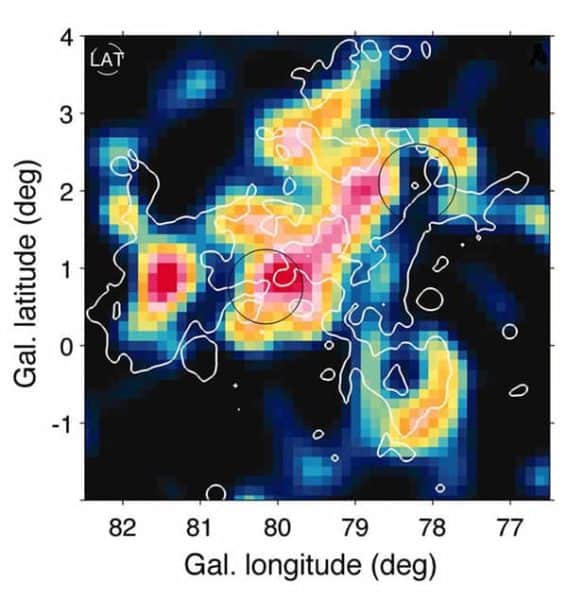For more than 100 years, scientists have speculated on the origins of cosmic rays with some agreement, but without certainty. Since “cosmic rays” are neither cosmic nor rays, this uncertainty makes sense. Though known to be primarily fast ionized atoms, scientists have long held that any real theory about cosmic rays’ origins required clarity on their composition.
That’s where UC San Diego’s Richard Lingenfelter comes in. The research physicist emeritus at the Center for Astrophysics and Space Sciences (CASS), in a paper just released in the Astrophysical Journal Supplement Series, confirms the source of the universe’s most energetic particles known. Synthesizing new measurements and scientific insights, the physicist shows that the sources and sites of cosmic ray acceleration and the process of their generation rest in supernovae—extremely bright, super-powerful explosions of stars.
Lingenfelter asserts that the unique elemental composition of cosmic rays can result from just two basic processes: 1) the bulk turbulent mixing of products of these supernovae with their swept-up surrounding interstellar medium and 2) their injection as fully stripped ions into the accelerating supernova shocks by collisions of their mixed dust grains mostly running into hydrogen and helium atoms in the gas.
According to the CASS researcher, the combination of these supernova shocks, the blastwave pushing ahead the surrounding medium and the reverse shock that it generates pushing back against the expanding supernova ejecta, accelerate the cosmic rays to the highest known energies—to nearly the speed of light. This exponential energy comes from supernovae explosions that blast out particles in an ultra-hot gas that rushes through space and expands. As its reach grows, the gas cools, its particles stop colliding and it condenses into solid matter.
The scientific details are more complex, as Lingenfelter outlines in his paper. For example, previous research has shown that this hot gas both expands at high speed and cools in its moving frame until it reaches about 20 degrees Kelvin—or -423.67 Fahrenheit. Within just a few years, most of the heavy elements condense into crystals: diamonds, graphite and other “dust” that continue moving at the same high velocity.
“These go along until they run into and push out interstellar media, which travel ahead of them, building up shockwaves with just a fraction of the original supernova energy,” said Lingenfelter. “The shocks and turbulence that occur amidst this expansion continually mix up more and more mass of the material with increasing supernova remnant age. Thus the measured ratio of the swept-up interstellar medium mass to that of supernova ejecta in the accelerated cosmic rays tells us exactly when most of that acceleration occurred.”
Lingenfelter said that all takes place just as the reverse shock is expected to pass through its largest extent and peak strength, and the turbulent grain sputtering injection is also expected to peak. Thus, this mixing value further supports such a cosmic ray origin and ties it strongly to the broader model calculations of supernova remnant expansions.
“There’s a real boost,” said Lingenfelter. “Elements from the sputtered grains are the most enriched, so the unique composition of cosmic rays is mainly from this enhancement. They are the heaviest and distort the composition of cosmic rays, which has contributed to the lack of scientific consensus around cosmic ray abundance and their rates of acceleration.”
According to Lingenfelter, with the ever-improving measurements of the elemental composition of cosmic rays, scientists have collectively provided details to clearly reveal the sources, sites and timing of cosmic ray acceleration and the processes of their generation in long-suspected supernovae.
“With all these new observations and insights, we can now define and test the conditions of cosmic ray acceleration and explore even more detailed models,” he said.


